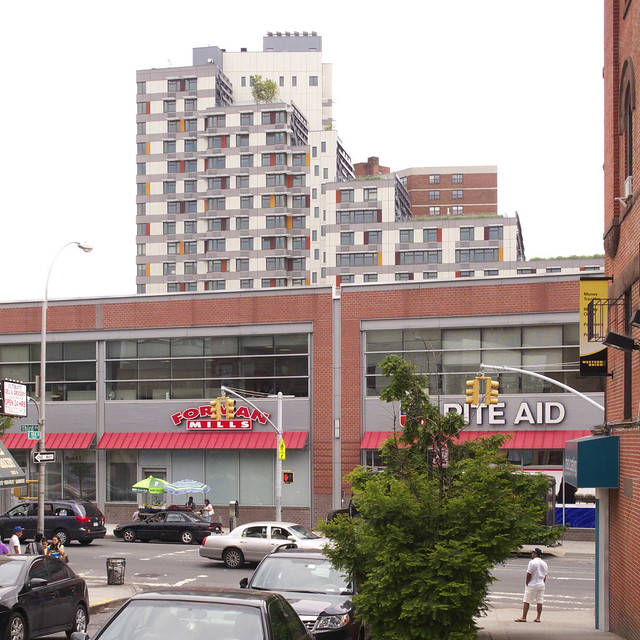
[All images (c) Ann Beha Architects / Gensler]
Boston's Ann Beha is an architect versed in historic restoration and contemporary architecture, a rare breed. Many people see these as polar concerns without common ground, but Beha's work acknowledges old buildings without letting them determine a recipe for new additions. Or to put it another way, she neither mimics nor overpowers existing buildings, instead finding qualities that should be extended in a new intervention, such as scale, texture, and materiality. The New England Conservatory's first building in over 60 years is a good example of her contemporary contextualism.

Per the architect's statement, the New England Conservatory "occupies 2.5 acres and offers undergraduate and graduate degree programs, a continuing education program, and a preparatory program for students ages 3-18." Beha is no stranger to the music institution, having restored Jordan Hall, the core of the campus in Boston's East Fenway district. The two-phase, new-construction project will demolish two existing buildings and be located adjacent to Jordan Hall, the building at right in the above photo and sketch. Beha's proposal aligns her design with this landmark building, both in terms of scale and alignment, but the top watercolor shows that the new building opens itself up where the old one is primarily closed off from the street.

As mentioned, the project is comprised of two phases. The taller piece in the model, and the low front engaging it, are phase one: the Student Life and Performance Center (student residences, dining hall, library, practice and performance faciliities). Groundbreaking on this part is planned for next year. Phase two is the smaller portion at left, an Academic Center with offices, practice rooms, and a black box theater. The watercolor sketch below offers a similar angle to the model above.


One thing striking about the design is the means of presentation. Watercolors are not a fairly common medium anymore, given the ease with which architects can produce realistic computer renderings. Of course, the latter run the risk of draining the unexpected from the design process, meaning that watercolors offer the potential for change, or at least room for development as a building moves toward reality. I wouldn't be surprised if computer renderings follow later this year or next year, though, as they are effective tools for fundraising, an extremely important concern with institutions these days.

Watercolors also allow modern/contemporary designs to go down a little easier, if you will. Boston is a city proud of its historic buildings, so new insertions like this one by Beha with associate architect Gensler are ripe for opposition. Renderings that are softer than computer-generated ones, and which exhibit the delineator's hand rather than the architect's ability to manipulate layers in Photoshop, help to convince people that forward-thinking designs have a place in the contemporary city, even when sitting by historic landmarks.

















![WELCOME TO THE BLACK & WHITE BOOKSHOP #4[Ciências exactas]](http://farm6.staticflickr.com/5465/7371745888_0fea7b8ba8_z.jpg)

![WELCOME TO THE BLACK & WHITE BOOKSHOP #1[Ciências sociais e humanas]](http://farm6.staticflickr.com/5335/7189976341_aabac0cf6f_z.jpg)
























